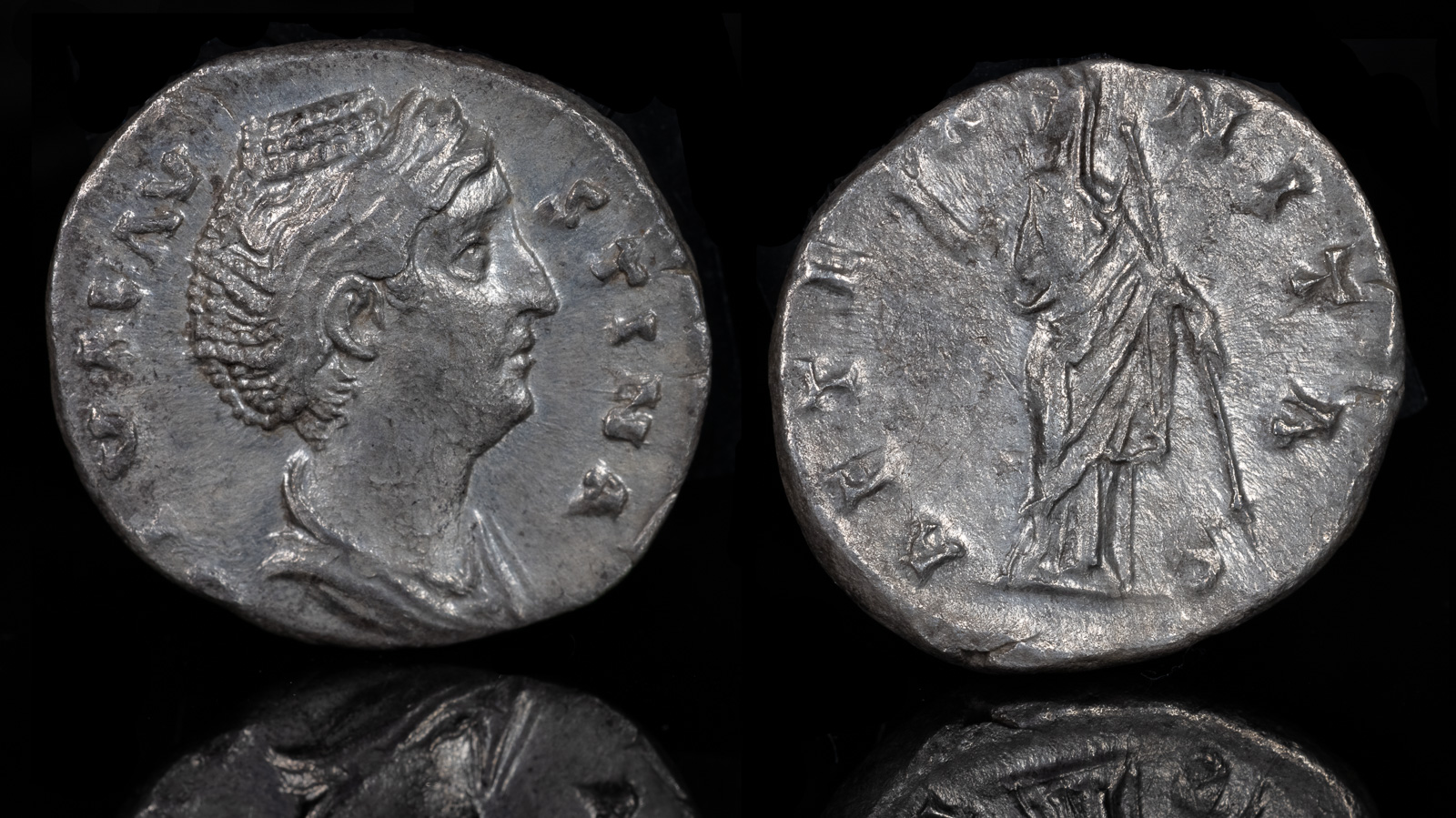Aeternitas
View All Tags
Aeternitas is often depicted in Roman art and coinage as a majestic figure holding symbols of permanence and infinity. Common attributes include a globe, representing universal dominion and the unending cycle of time, and a phoenix, a mythical bird associated with rebirth and immortality. She may also appear with the sun and moon, further emphasizing the eternal nature of cosmic cycles and the lasting order they symbolize. Her iconography often aligns with themes of renewal, endurance, and the idea that Rome’s influence would persist indefinitely.
In political and imperial contexts, Aeternitas was closely linked to the concept of the eternal rule of the Roman Empire. Emperors used her image to convey the idea that their reigns were divinely sanctioned and part of an unbroken continuum of Roman greatness. This was particularly significant during periods of crisis or transition, when the invocation of Aeternitas reassured citizens of the empire’s resilience and the stability of its institutions.
Beyond its political implications, Aeternitas also held spiritual and philosophical significance. In a broader sense, she symbolized the eternal truths of the cosmos and the divine order that governed existence. This idea resonated with Roman Stoic philosophy, which emphasized the importance of living in harmony with the natural order and accepting the cyclical nature of life.

Diva Faustina I
Rome 140-141 CE
AR Denarius 18mm, 3,34g
Obv: DIVA AVG FAVSTINA, draped bust right
Rev: AETERNITAS, Venus (or Aeternitas) standing left, holding sceptre
Reference: RIC III-344 (Antoninus Pius); RSC-26